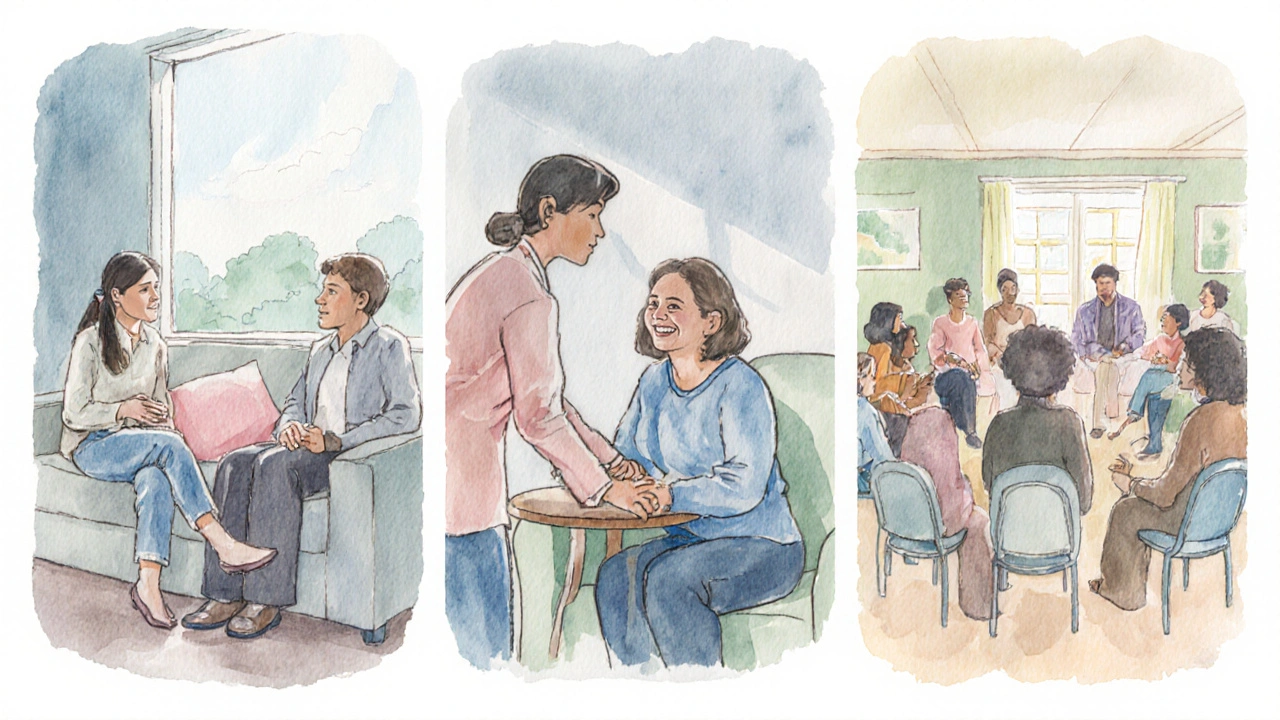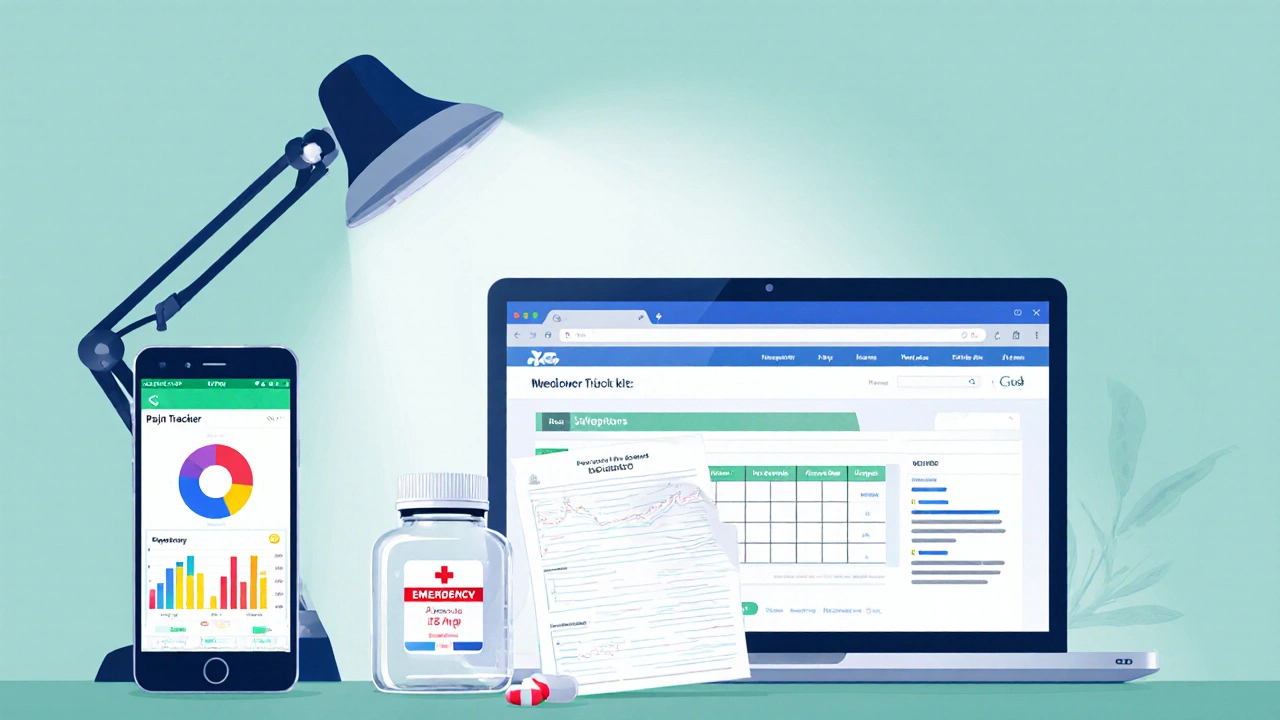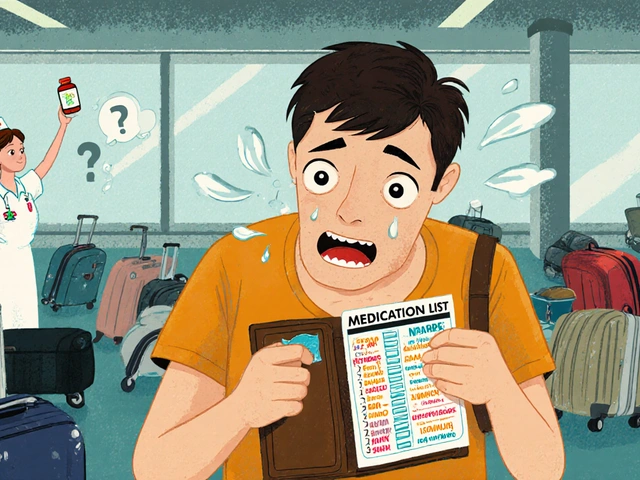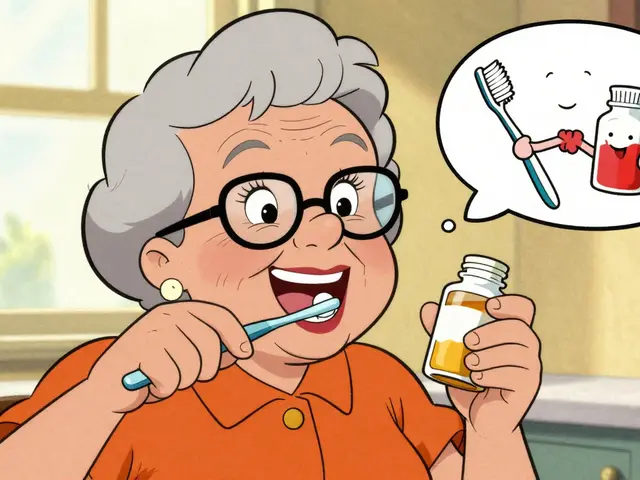Trigeminal Neuralgia Support System Checklist
Your Support System Components
Track your progress through each component of your Trigeminal Neuralgia support system.
Medication Reminder
Track your medication schedule to ensure consistency.
Medication Log
When dealing with Trigeminal Neuralgia a neurological disorder characterized by sudden, severe facial pain, the right network of people, tools, and treatments can make the difference between living in fear and reclaiming daily life. Below is a step‑by‑step guide to creating a Trigeminal Neuralgia support system that covers medical, emotional, and practical needs.
What a Support System Really Means
A support system isn’t just a list of doctors. It’s a coordinated web that includes healthcare professionals, family members, peer connections, and resources that keep information flowing and stress low.
Core Components to Include
- Medical Team - neurologist, pain‑management specialist, primary care physician, and, when needed, surgeons.
- Emotional Backbone - caregivers, psychological counseling, and support groups.
- Practical Toolkit - medication schedules, symptom trackers, emergency plans, and reliable information sources.
Step 1: Assemble the Healthcare Team
Start by identifying the key clinicians who will guide diagnosis and treatment.
- Find a Neurologist a doctor specializing in nervous‑system disorders with experience in facial pain. Look for board certification and patient reviews that mention Trigeminal Neuralgia.
- Schedule a referral to a Pain Management Specialist a clinician trained in multimodal pain control. They can adjust medication doses and suggest nerve blocks.
- Keep your Primary Care Physician the doctor who knows your overall health history in the loop. They help coordinate labs, monitor side effects, and manage comorbidities.
- If medication fails, discuss surgical options with a Neurosurgeon a surgeon who performs procedures on the brain and nerves. The most common procedure for TN is Microvascular Decompression a surgery that relieves pressure on the trigeminal nerve.
Step 2: Choose the Right Medications
Medication is the first line of defense for most patients.
- Carbamazepine an anticonvulsant frequently prescribed for TN - start low, increase slowly, watch for dizziness or skin rash.
- Alternative options include oxcarbazepine, gabapentin, or baclofen when carbamazepine is not tolerated.
- Keep a medication log (paper or app) that records dose, time, side effects, and pain rating. Review the log with your neurologist every 3‑4 weeks.

Step 3: Add Emotional Support
Living with unpredictable facial pain can trigger anxiety and depression. Address these early.
- Identify a Caregiver a trusted family member or friend who helps with daily tasks who understands the need for flexibility in appointments and rest periods.
- Schedule regular sessions with a Psychological Counselor a mental‑health professional experienced in chronic‑pain coping strategies. Cognitive‑behavioral therapy (CBT) has shown measurable reduction in pain perception.
- Join a Support Group a community of TN patients and families sharing experiences. In‑person meetings are common in major cities; online forums broaden access.
Step 4: Set Up Peer Support Channels
Peer connections fill gaps that clinicians can’t cover.
| Option | Format | Typical Frequency | Key Benefits | Potential Drawbacks |
|---|---|---|---|---|
| Local Support Group | In‑person meeting | Monthly | Face‑to‑face empathy, shared resources | Travel required, limited slots |
| Online Forum (e.g., Reddit, specialized TN boards) | Text‑based, asynchronous | 24/7 access | Reach anywhere, anonymity | Variable moderation, misinformation risk |
| One‑on‑One Mentor (experienced patient) | Video call or phone | Bi‑weekly or as needed | Personalized guidance, trusted ally | Finding a reliable mentor can be time‑consuming |
Step 5: Build the Practical Toolkit
Every component works best when it’s organized and easy to reach.
- Symptom Tracker - use apps like MyPainDiary or a simple spreadsheet. Log pain intensity (0‑10), trigger events, medication taken, and relief measures.
- Emergency Action Plan - write a one‑page sheet with the following:
- Current medication list and dosages.
- Contact numbers for neurologist, pain specialist, and nearest emergency department.
- Instructions on what to do if a pain episode lasts longer than 5 minutes or is accompanied by vision changes.
- Educational Resources - keep reputable sources handy, such as the American Headache Society, National Institute of Neurological Disorders and Stroke, and patient‑authored books like *Living with Trigeminal Neuralgia*.
Step 6: Review and Adapt the System Regularly
What works today may need tweaking in six months.
- Schedule a quarterly “support audit” with your caregiver and primary doctor. Review medication effectiveness, side‑effects, and any new triggers.
- Ask the support group about new therapies or clinical trials. Many universities run pilot studies on nerve‑stimulating devices.
- Update the emergency plan any time a medication changes or a new specialist joins the team.
Quick Checklist for a Robust TN Support System
- Identify a neurologist experienced with facial pain.
- Set up a pain‑management specialist and primary care physician.
- Choose the first‑line medication and start a log.
- Assign a dedicated caregiver or family contact.
- Enroll in at least one support group (local or online).
- Create a symptom tracker and emergency action sheet.
- Plan a quarterly review meeting.

Frequently Asked Questions
What is the first medication doctors usually prescribe for Trigeminal Neuralgia?
The most common first‑line drug is Carbamazepine an anticonvulsant effective in reducing TN pain attacks. Dosage starts low (typically 100mg twice daily) and is increased gradually under physician supervision.
How often should I meet with my support group?
Monthly in‑person meetings work well for most patients, but supplementing with an active online forum provides daily peer interaction and quick advice between meetings.
When is surgery considered for TN?
Surgery, such as Microvascular Decompression a procedure that relieves nerve compression, is usually recommended after medications fail to control pain or cause intolerable side effects, and after an assessment by a neurosurgeon.
What are the best ways to track my pain episodes?
A digital diary or a simple spreadsheet works well. Record the intensity (0‑10), triggers, medication taken, and any relief methods used. Review the data weekly with your neurologist.
Can lifestyle changes reduce TN attacks?
Avoiding known triggers-such as extreme temperatures, strong wind, or chewing gum-can lower attack frequency. Stress‑management techniques (mindfulness, gentle yoga) also help by reducing overall muscle tension.






Comments
One must recognise that constructing a support system is not merely an optional add‑on but a moral obligation to the patient. It is a grave error to treat such a plan as a convenience rather than a duty. The medical team should be selected with the utmost rigor, and any deviation from best practice is simply unacceptable. Moreover, neglecting emotional support borders on ethical negligence. Those who fail to documet medication schedules are, in effect, betrayng the trust placed in them. It is imperative that caregivers understand their responsibility and act with unwavering dedication.
Hey folks, I totally get how overwhelming all these steps can feel, but think of it as building a safety net that catches you when the pain spikes. Imagine each component-a neurologist, a caregiver, a tracking app-as a thread in a tapestry that you and your loved ones weave together. When you share your journey, you’re not just helping yourself; you’re lighting the way for anyone else walking this tough road. Keep the conversation alive, and remember that empathy is the strongest medicine we have.
Start a medication log today!!! Record dose, time, side‑effects-everything!!! Use a simple spreadsheet or an app-choose what feels right!!! Review the entries weekly-adjust with your doctor!!! Consistency is key!!!
In truth, the architecture of a support system mirrors the very nature of balance in life-order and chaos intertwined. One must align clinical expertise with personal resilience, lest the scales tip toward despair. The neurologist provides the map, the caregiver supplies the compass, and the patient holds the torch. Only by honoring each role can the journey toward relief become a purposeful pilgrimage.
Quick tip: set a daily reminder on your phone for meds, and pair it with a coffee break so you never miss a dose. Also, grab a buddy from your support group to check in twice a week-accountability goes a long way. Stay positive, keep tweaking the plan, and you’ll find the rhythm that works for you.
While the checklist looks thorough, one must question its practicality. Real‑world constraints often render such exhaustive lists moot. Simplicity sometimes triumphs over complexity.
Look, if you think adding another line item will magically stop the pain, you’re dreaming. Focus on what actually moves the needle-effective meds and a responsive doctor. The rest is fluff that wastes time.
The guidance is solid, but there are a few errors that need correction. For example, "definately" should be "definitely" and "its" should be "it's". Also, make sure the bullet points are consistently formatted.
Honestly, anyone who doesn't already have a neurosrguon on speed dial is just playing at being a patient. The checklist is a waste of time for the half‑hearted. Get serious or quit whining.
Wow, this guide is a powerhouse! 🎉 I love how it breaks everything down step by step. If you're feeling lost, grab a friend and go through the checklist together-you’ll both feel more empowered. Remember, every small win adds up, so celebrate each completed item!
Creating a support system for trigeminal neuralgia is like assembling a symphony where every instrument must be perfectly tuned 🎻. First, you need a maestro-your neurologist-who understands the intricacies of facial pain and can conduct the rest of the team. Next, recruit a percussionist, the pain‑management specialist, whose beats of medication adjustments keep the rhythm steady. Your primary care physician acts as the steady bass line, providing the underlying health context that prevents the music from wobbling. If medication fails, the neurosurgeon becomes the soloist, delivering a bold, decisive solo that can change the entire composition. 🎶 Emotional support is the chorus that lifts the melody; without it, the piece feels hollow. Assign a caregiver who can anticipate your crescendos of pain and decrescendos of relief. A psychologist adds harmony, using cognitive‑behavioral techniques to smooth out dissonant thoughts. Joining a support group provides a choir of voices that echo your experiences, reminding you that you’re never truly alone. Practical tools are the sheet music: a symptom tracker app lets you annotate each note of pain, its intensity, and its triggers. An emergency action plan is your safety net, a backstage pass that ensures you know exactly who to call when the high notes become unbearable. Keep reputable educational resources on hand, like the American Headache Society, to stay updated on new treatments and research. Remember to review and adapt the system regularly, because an orchestra must rehearse and adjust. Schedule quarterly audits with your caregiver and doctors, and be ready to incorporate fresh therapies or clinical trials. By treating your support system as a living, breathing composition, you transform a daunting diagnosis into a collaborative masterpiece. 🌟
Oh please, turning a medical plan into a symphony? 🎭 While fancy metaphors are cute, patients need hard data, not poetic fluff. The checklist is already over‑engineered; adding more lyrical prose just distracts from real action.
This checklist is overblown.
The article covers the basics, but it overlooks the fact that many patients respond better to non‑pharmacological approaches like microvascular decompression, which has a success rate exceeding 80% in selected cases.
While the structure is sound, I would suggest integrating the symptom tracker directly into the patient portal to streamline data entry and facilitate real‑time clinician review.
Keep it simple, update meds regularly, use a reliable tracker.
Honestly, the guide is okay but could be trimmed; some sections feel repetitive.